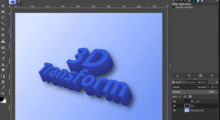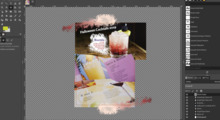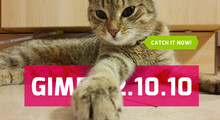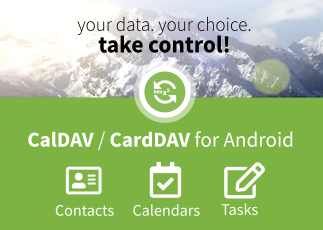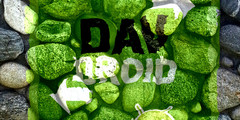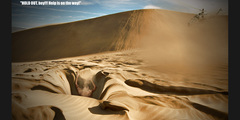Extreme newby needs some help please!
This discussion is connected to the gimp-user-list.gnome.org mailing list which is provided by the GIMP developers and not related to gimpusers.com.
This is a read-only list on gimpusers.com so this discussion thread is read-only, too.
| Extreme newby needs some help please! | Jessica Tomlinson | 13 Aug 00:04 |
| Extreme newby needs some help please! | Liam R E Quin | 13 Aug 00:27 |
| Extreme newby needs some help please! | Partha Bagchi | 13 Aug 00:28 |
| Extreme newby needs some help please! | Daniel Hauck | 13 Aug 01:40 |
| Extreme newby needs some help please! | Jessica Tomlinson | 13 Aug 13:50 |
| Extreme newby needs some help please! | Alexandre Prokoudine | 13 Aug 14:03 |
| Extreme newby needs some help please! | Jessica Tomlinson | 13 Aug 14:27 |
| Extreme newby needs some help please! | SavvySaffer | 17 Aug 06:19 |
| Extreme newby needs some help please! | Greg Chapman | 13 Aug 09:01 |
Extreme newby needs some help please!
Hi all,
I'm really pleased to discover such a complete, free application which grew out of a community spirit. However, I'm a little frustrated because I'm having a bit of trouble figuring out just what makes it tick ;0. I've pored over parts of the online guide, and am having trouble understanding some of the language in it. Basically, I'm a teacher, and haven't done much digital art, but I've been inspired by the whole host of "teacher bloggers" and their cool creations. I like to draw on paper, but am not very good at it. ;) Basically, I've drawn a whole set of letters, which I intend to make into an "alphabet", which is not really a font, but is used like one sometimes. I've attached this question mark which is a test that I've been playing with. I want to make it transparent, like a regular GIF image, so you can set it against color and not have a tacky white square. I've been trying to select and cut the white area with the "select
by color" tool, but I'm not sure if this is working or not. I wanted to do the same for some black stray lines, but it didn't work at all. But for this, I could get rid of them with the eracer tool. Also, instead of saving as a GIF file, it insists on saving this as a GIMP image! Why is this?? Thanks in advance.
Jessica
Extreme newby needs some help please!
On Sun, 2012-08-12 at 17:04 -0700, Jessica Tomlinson wrote:
Hi all,
I'm really pleased to discover such a complete, free application which grew out of a community spirit. However, I'm a little frustrated because I'm having a bit of trouble figuring out just what makes it tick ;0.
I'd suggest getting hold of "gimp for artists" or for a more traditional aproach :-) Akkana Peck's book on gimp.
For your immediate question... inkscape is easier than gimp for making a font, but, to use gimp...
put each image in a separate file. You'll then open an image, go to the Layers dialogue (control-l, or it starts out life docked next to the image if you didn't move it already), right-click on the "background" layer and choose 'add alpha channel' - this lets the image include transparency.
Use the eraser and/or paintbrush to clean up the image; if you scanned it, look under the colours menu for Levels and press the Auto button, and for Curves and drag the ends of the diagonal line horizontally towards the middle, making a steeper line, to increase contrast.
next, go to the layer menu and, under transparency, choose Colour to Alpha. You can probably just click OK to get the white in the image to be transparent.
Finally, go to the File menu and use Export As to export as PNG (this will give better results than GIF in most cases).
Liam
Extreme newby needs some help please!
Hi,
Try the following. Click on the Color Menu Item and then Color to Alpha. White should already be selected and so hit OK. You are done.
Partha
On Sun, Aug 12, 2012 at 8:04 PM, Jessica Tomlinson wrote:
Hi all,
I'm really pleased to discover such a complete, free application which grew out of a community spirit. However, I'm a little frustrated because I'm having a bit of trouble figuring out just what makes it tick ;0. I've pored over parts of the online guide, and am having trouble understanding some of the language in it. Basically, I'm a teacher, and haven't done much digital art, but I've been inspired by the whole host of "teacher bloggers" and their cool creations. I like to draw on paper, but am not very good at it. ;) Basically, I've drawn a whole set of letters, which I intend to make into an "alphabet", which is not really a font, but is used like one sometimes. I've attached this question mark which is a test that I've been playing with. I want to make it transparent, like a regular GIF image, so you can set it against color and not have a tacky white square. I've been trying to select and cut the white area with the "select by color" tool, but I'm not sure if this is working or not. I wanted to do the same for some black stray lines, but it didn't work at all. But for this, I could get rid of them with the eracer tool. Also, instead of saving as a GIF file, it insists on saving this as a GIMP image! Why is this?? Thanks in advance.Jessica
_______________________________________________ gimp-user-list mailing list
gimp-user-list@gnome.org
https://mail.gnome.org/mailman/listinfo/gimp-user-list
Extreme newby needs some help please!
First thing I wanna say is I support teachers. I had many teachers... most good... some not... My sons had teachers... dated a teacher... anyway, I know the life of a teacher and what they do. Not just government employees or civil servants, but community builders and more. Truly unsung heroes.
Anyway, that aside, let's talk about what you want to accomplish.
Firstly, there's a constantly accumulating pool of examples and tutorials out there. Find them and work through them. You will have ideas while you go through them so explore and learn. Get a feel for what's going on in there.
One of my favorite things to have learned about is layer masking. With layer masking, you can really get good effects with semi-transparency controlled through layer masking. And Layer masking is what your project wants the most.
First thing you need to do is add transparency to your layer. Do this by going to the layer menu, transparency and add alpha channel. Alpha is a fancy way of saying some pixels are more transparent than others. And layer masks let you control that transparency where black is 100% transparent and white is 100% opaque and the greys in between are levels of transparency.
So one thing I did was right-click on the layer and add layer mask... or you could use the menus.. same thing. It offers a dialog with options... I went with "Grayscale copy of layer" and checked the "invert mask" and "OK" You'll already have achieved the desired effect... (affect? are you an English teacher? I always get those confused...anyway... okay, it's effect... I think)
The effect isn't perfect though. If you add a layer and make it white, then drag that new white layer under (behind) the original layer and you will see a lighter colored version of your original image. It's the white showing through. You may want to tweak this a bit by right-clicking on your main layer and then selecting "show layer mask." Now you can see a black and white negative of your image. Now you can play with the brightness, contrast, and (my favorite) the levels. With the mask showing, you can tweak the lighter areas in a way that makes the sem-transparent with the white later beneath look like your original image.
Once achieved, you can do this to all of your letters in a repetitive fashion.
I got pretty good results... wanna see?
On 08/12/2012 08:04 PM, Jessica Tomlinson wrote:
Hi all,
I'm really pleased to discover such a complete, free application which grew out of a community spirit. However, I'm a little frustrated because I'm having a bit of trouble figuring out just what makes it tick ;0. I've pored over parts of the online guide, and am having trouble understanding some of the language in it. Basically, I'm a teacher, and haven't done much digital art, but I've been inspired by the whole host of "teacher bloggers" and their cool creations. I like to draw on paper, but am not very good at it. ;) Basically, I've drawn a whole set of letters, which I intend to make into an "alphabet", which is not really a font, but is used like one sometimes. I've attached this question mark which is a test that I've been playing with. I want to make it transparent, like a regular GIF image, so you can set it against color and not have a tacky white square. I've been trying to select and cut the white area with the "select by color" tool, but I'm not sure if this is working or not. I wanted to do the same for some black stray lines, but it didn't work at all. But for this, I could get rid of them with the eracer tool. Also, instead of saving as a GIF file, it insists on saving this as a GIMP image! Why is this?? Thanks in advance. Jessica
Extreme newby needs some help please!
Hi Jessica,
On 13 Aug 12 01:04 Jessica Tomlinson said:
I've attached this question mark which is a test that I've been playing with. I want to make it transparent, like a regular GIF image, so you can set it against color and not have a tacky white square. I've been trying to select and cut the white area with the "select by color" tool, but I'm not sure if this is working or not.
The "Select by color" or "Fuzzy select" tool should do the job of selecting the white area, producing a set of "marching ants" around the selected colour.
However, before you do that you need to "Add Alpha Channel" to the layer. It is that channel that allows an area to become transparent when you delete a selection.
Then hit the DELETE key and the selected area will become transparent showing a grey checkerboard to indicate transparancy.
I wanted to do the same for some black stray lines, but it didn't work at all. But for this, I could get rid of them with the eracer tool.
You probably just made them white - the eraser simply paints in the background colour (whereas the pencil and brush, etc paint in foreground colour), so in this case it just happened to be the colour you wanted.
Also, instead of saving as a GIF file, it insists on saving this as a GIMP image! Why is this??
Because GIMP will only SAVE to its native format (.xcf). If you want to produce a file in another format you must EXPORT it and choose the desired file format.
Greg Chapman
http://www.gregtutor.plus.com
Helping new users of KompoZer and The GIMP
gimp-user-list mailing list gimp-user-list@gnome.org https://mail.gnome.org/mailman/listinfo/gimp-user-list
Extreme newby needs some help please!
I'd like to thank all of you for your helpful ideas and support. Daniel, thanks for your nice words. ;) I'm a bit clearer on most points now, but am still quite foggy on this whole selecting with a layer mask thing. Why would one want some pixels to be partially selected, or partially transparent? I would think you'd want any part to be either selected or not, transparent or opake. What extra functionality does this "partial" gray area give one in cleaning up an image? Also, I've found that there's some tutorials in the user guide, but is there a place on the web where they are shared and updated as well?
From: Daniel Hauck To: Jessica Tomlinson Cc: "gimp-user-list@gnome.org" Sent: Sunday, August 12, 2012 8:40 PM Subject: Re: [Gimp-user] Extreme newby needs some help please! First thing I wanna say is I support teachers. I had many teachers... most good... some not... My sons had teachers... dated a teacher... anyway, I know the life of a teacher and what they do. Not just government employees or civil servants, but community builders and more. Truly unsung heroes. Anyway, that aside, let's talk about what you want to accomplish. Firstly, there's a constantly accumulating pool of examples and tutorials out there. Find them and work through them. You will have ideas while you go through them so explore and learn. Get a feel for what's going on in there. One of my favorite things to have learned about is layer masking. With layer masking, you can really get good effects with semi-transparency controlled through layer masking. And Layer masking is what your project wants the most. First thing you need to do is add transparency to your layer. Do this by going to the layer menu, transparency and add alpha channel. Alpha is a fancy way of saying some pixels are more transparent than others. And layer masks let you control that transparency where black is 100% transparent and white is 100% opaque and the greys in between are levels of transparency. So one thing I did was right-click on the layer and add layer mask... or you could use the menus.. same thing. It offers a dialog with options... I went with "Grayscale copy of layer" and checked the "invert mask" and "OK" You'll already have achieved the desired effect... (affect? are you an English teacher? I always get those confused...anyway... okay, it's effect... I think) The effect isn't perfect though. If you add a layer and make it white, then drag that new white layer under (behind) the original layer and you will see a lighter colored version of your original image. It's the white showing through. You may want to tweak this a bit by right-clicking on your main layer and then selecting "show layer mask." Now you can see a black and white negative of your image. Now you can play with the brightness, contrast, and (my favorite) the levels. With the mask showing, you can tweak the lighter areas in a way that makes the sem-transparent with the white later beneath look like your original image. Once achieved, you can do this to all of your letters in a repetitive fashion. I got pretty good results... wanna see? On 08/12/2012 08:04 PM, Jessica Tomlinson wrote: > Hi all, > I'm really pleased to discover such a complete, free application which grew out of a community spirit. However, I'm a little frustrated because I'm having a bit of trouble figuring out just what makes it tick ;0. I've pored over parts of the online guide, and am having trouble understanding some of the language in it. Basically, I'm a teacher, and haven't done much digital art, but I've been inspired by the whole host of "teacher bloggers" and their cool creations. I like to draw on paper, but am not very good at it. ;) Basically, I've drawn a whole set of letters, which I intend to make into an "alphabet", which is not really a font, but is used like one sometimes. I've attached this question mark which is a test that I've been playing with. I want to make it transparent, like a regular GIF image, so you can set it against color and not have a tacky white square. I've been trying to select and cut the white area with the "select by color" tool, but I'm not sure if this is working or not. I wanted to do the same for some black stray lines, but it didn't work at all. But for this, I could get rid of them with the eracer tool. Also, instead of saving as a GIF file, it insists on saving this as a GIMP image! Why is this?? Thanks in advance. > Jessica >
Extreme newby needs some help please!
On Mon, Aug 13, 2012 at 5:50 PM, Jessica Tomlinson wrote:
am still quite foggy on this whole selecting with a layer mask thing. Why would one want some pixels to be partially selected, or partially transparent?
Jessica,
There are many uses for that. In general, this way you can make gradual transitions between two layers.
For example, a typical sunset photo has a sky that looks OK, but the ground/water is a bit too dark.
You can duplicate the original layer, then raise brightness of one of the layers, then combine them via a layer mask, where selection gradually changes. As the result, both sky and ground/water will look just like when you were taking the picture.
Here is another example of, ahem, artistic use of this feature: http://prokoudine.info/gallery/images/20060901222040_img_0450.jpg
Alexandre Prokoudine http://libregraphicsworld.org
Extreme newby needs some help please!
Hey, that's pretty cool!! Thanks for sharing! Now, I understand it better. One last little thing before I step away for the day. Sorry to keep bugging y'all. I spent a pretty frustrating hour not really able to make anything work at all. When one wishes to use tools to change something about an image, I'd think that if they select the desired layer in the layer box to the right (turning it dark blue over there), I'd think one is good to go as far as modifying it. Is there some special secret handshake to tell the program that the particular image is what you want to work on, thus, allowing all of the interesting tools to work on it. I've been able to add an alpha channel to make it transparent, but want to go through and clean it up a bit. Thanks again.
From: Alexandre Prokoudine To: "gimp-user-list@gnome.org" Sent: Monday, August 13, 2012 9:03 AM Subject: Re: [Gimp-user] Extreme newby needs some help please! On Mon, Aug 13, 2012 at 5:50 PM, Jessica Tomlinson wrote: > am still quite foggy on this whole selecting with a layer mask thing. Why > would one want some pixels to be partially selected, or partially > transparent? Jessica, There are many uses for that. In general, this way you can make gradual transitions between two layers. For example, a typical sunset photo has a sky that looks OK, but the ground/water is a bit too dark. You can duplicate the original layer, then raise brightness of one of the layers, then combine them via a layer mask, where selection gradually changes. As the result, both sky and ground/water will look just like when you were taking the picture. Here is another example of, ahem, artistic use of this feature: http://prokoudine.info/gallery/images/20060901222040_img_0450.jpg Alexandre Prokoudine http://libregraphicsworld.org
- postings
- 2
Extreme newby needs some help please!
Congratulations, you're beginning to get to know your way around Gimp. You've come a long way already!
Working on a layer - You said you selected the layer by turning the layer box to a highlighted color. Take another, closer look at the layers dialog. When you click on the little image of the layer, yes, the whole line will be highlighted, but a narrow WHITE border will appear around the thumbnail. Click on another layer in the same image to see what I mean. Black border... Not selected. White border... selected. When you start working with layer masks this will be vitally important to remember.
Even more subtle is the actual layer name. If the name is written with a bold font, it has NO alpha-channel, and therefore no transparency information. If it is in normal font, the alpha channel is present. Right-click on the layer and add and remove the alpha channel to see how that works.
While we're on the layers, there's an 'eye' button there too. Click it on and off to see the layer. If you apply a tool to a layer below all the visible ones, you won't be able to see your changes (depending on your blending modes, but that's for another discussion).
Hey, that's pretty cool!! Thanks for sharing! Now, I understand it better. One last little thing before I step away for the day. Sorry to keep bugging y'all. I spent a pretty frustrating hour not really able to make anything work at all. When one wishes to use tools to change something about an image, I'd think that if they select the desired layer in the layer box to the right (turning it dark blue over there), I'd think one is good to go as far as modifying it. Is there some special secret handshake to tell the program that the particular image is what you want to work on, thus, allowing all of the interesting tools to work on it. I've been able to add an alpha channel to make it transparent, but want to go through and clean it up a bit. Thanks again.
________________________________
From: Alexandre Prokoudine
To: "gimp-user-list@gnome.org"
Sent: Monday, August 13, 2012 9:03 AM Subject: Re: [Gimp-user] Extreme newby needs some help please!
On Mon, Aug 13, 2012 at 5:50 PM, Jessica Tomlinson wrote:
am still quite foggy on this whole selecting with a layer mask thing. Why would one want some pixels to be partially selected, or partially transparent?
Jessica,
There are many uses for that. In general, this way you can make gradual transitions between two layers.
For example, a typical sunset photo has a sky that looks OK, but the ground/water is a bit too dark.
You can duplicate the original layer, then raise brightness of one of the layers, then combine them via a layer mask, where selection gradually changes. As the result, both sky and ground/water will look just like when you were taking the picture.
Here is another example of, ahem, artistic use of this feature: http://prokoudine.info/gallery/images/20060901222040_img_0450.jpg
Alexandre Prokoudine
http://libregraphicsworld.org

